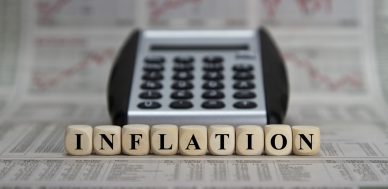Too Much Money Supply Could Mean Surging Inflation
If you have a lot of something, its value declines. This is one of the first lessons you learn in Economics 101. The exact same thing is true for money; if you have a lot of money supply, it leads to inflation.
And over the last few years, the U.S. Federal Reserve has printed a lot of money.
To give you some idea, look at the money supply chart below. Just before the financial crisis of 2008–2009, the money supply in the U.S. stood at roughly $8.0 trillion. Now, it stands at almost $15.3 trillion. If you do the simple math, the money supply has grown by over 90% in the U.S. since then. (Source: “MZM Money Stock,” Federal Reserve Bank of St. Louis, last accessed March 5, 2018.)
(Source: Ibid.)
You should also know that, as the money supply was soaring, interest rates were kept low by the Fed. With this situation, banks didn’t really lend as much as before. A lot of the money was just sitting around and not being used.
Now, interest rates are increasing. What do you think banks will do? They will put the money to use.
We see evidence of this. For example, look at the chart below, which shows commercial and industrial loans at U.S. banks.
(Source: “Commercial and Industrial Loans, All Commercial Banks,” Federal Reserve Bank of St. Louis, last accessed March 5, 2018.)
It was only in 2014 when commercial and industrial loans increased above 2008 levels.
What do loans have to do with inflation? Again, Economics 101: inflation doesn’t really come in until consumption begins. With higher interest rates, a significant portion of the money that is just sitting around could be put to use. This phenomenon could send inflation soaring in the U.S.
Trump Tax Cuts Could Only Add to Inflation
But don’t just stop here. Not too long ago, the Donald Trump administration cut corporate taxes. With this development, companies in the U.S. will have more cash in hand.
What could they possibly do with the money they suddenly find in their hands? Well, they could try to expand their operations, invest in new projects, or even raise wages. All these factors could only add to inflation.
Higher Inflation Could Cause Volatility in Bonds and Stocks
The official data suggests that inflation in the U.S. economy is marching along just fine. Even the Federal Reserve doesn’t think inflation could be a problem.
According to the U.S. Bureau of Labor Statistics, inflation in the U.S. economy in 2017 was two percent. (Source: “CPI-All Urban Consumers (Current Series),” U.S. Bureau of Labor Statistics, last accessed March 5, 2018.)
The Federal Reserve expects inflation to be 1.9% in 2018, two percent in 2019, and two percent again in 2020. (Source: “Economic projections of Federal Reserve Board members and Federal Reserve Bank presidents under their individual assessments of projected appropriate monetary policy, December 2017,” Board of Governors of the Federal Reserve System, December 13, 2017.)
But, with all the money and tax cuts, one has to wonder what will happen. My take is that we will see inflation soar much higher than what the Fed currently thinks.
With this, remember that inflation is bonds’ biggest enemy. If inflation soars, the Federal Reserve may be forced to raise interest rates much faster, and higher rates kill bonds.
Don’t forget that, in early February, when we saw a sell-off in bonds because of possible higher inflation and interest rates, stocks fell too. Going forward, we could see the same. Stock and bond investors, beware.
